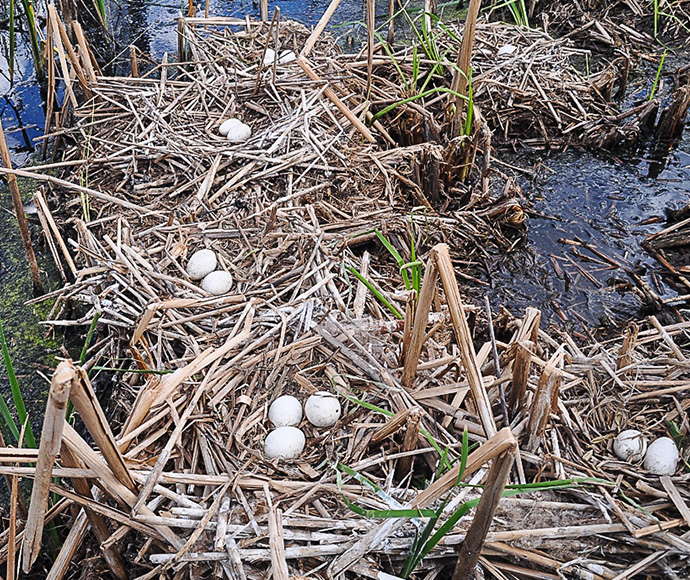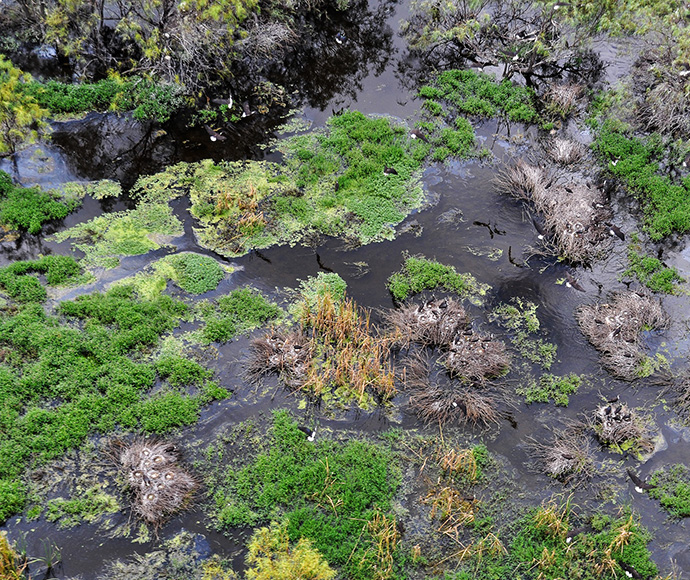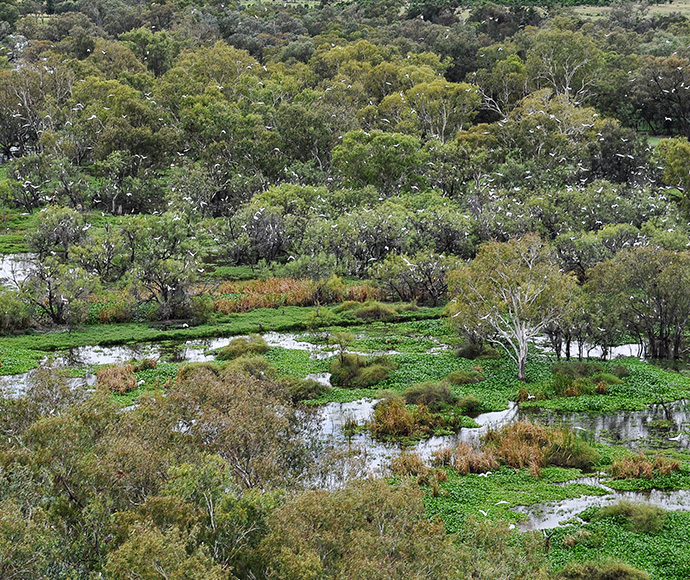On Thursday 3 November 2022, the Gwydir Environmental Water Advisory Group (EWAG) met to discuss and review their environmental water use strategy for the 2022–23 water year.
Gwydir fish community trends
NSW Department of Primary Industries (DPI) Fisheries presented analysis of the Gwydir fish community trends 2014–15 to 2020–21 report. The main findings included:
- Fish condition scores have improved but have not returned to 2013 levels. Fish were in moderate condition in 2013.
- The range of species in the Gwydir is good. Numbers and condition of those species is low.
- Murray cod and golden perch populations have continued to decline. Numbers over both sampling sites fell over time.
- Olive perchlet and silver perch were not detected by the monitoring program at all.
- Southern purple spotted gudgeon, Daring River hardyhead, and Northern Rivers blackfish were detected in very low numbers.
Waterbird update
At the time of the meeting there are currently 5 known waterbird colonies in the core wetland areas of Gingham Watercourse and Lower Gwydir. At least 8 species have been confirmed including:
- straw-necked ibis
- Australian white ibis
- eastern great egret
- intermediate egret
- little black cormorants
- little pied cormorants
- Australasian darters
- nankeen night herons.
Water for the environment has not been required to support this breeding event.
Flows to support breeding
There have been 4 large scale waterbird breeding events in the last 20 years. These occurred during large flood events in 2004–05, 2011–12, 2021–22 and 2022–23. Environmental flows can be used to maintain inundation and reduce the risk of nest abandonment. Colonies are checked regularly on the ground and from the air to ensure decisions are made using up to date information.
Following discussion, the majority of the Environmental Water Advisory Group supports the use of water for the environment as needed to maintain inundation or core wetlands to manage water levels during summer.
Responding to flow triggers
The Gwydir catchment Water Sharing Plan (WSP) contains an option to divert or reduce flows away from the Lower Gwydir and Gingham watercourses after 500,000 megalitres has flowed past Yarraman in the previous 6 months. This clause is locally referred to as 3T diversion. The 3T 'trigger' was reached on 10 October 2022, the Environmental Water Advisory Group was consulted in relation to the diversion. The Environmental Water Advisory Group did not support diverting or reducing flows at this time.
Review of annual watering plan
In April 2022 the Environmental Water Advisory Group supported a range of possible watering actions for the 2022–23 water year. Some of these have been met by ongoing wet conditions. These actions include:
| Action | Status |
|---|---|
| Support and build further wetland resilience in key water dependent vegetation communities, with particular reference to the Mallowa Wetlands. | On hold. Observing conditions. |
| Both early season stimulus flows, and stable fish flows create and support the recruitment of native fish into the local population. | Met by the recent wet conditions. |
| Support environment, cultural and social aspects of Whittakers Lagoon – Mehi/Meei Gawuul. | Met by the recent wet conditions but may be acted on later in the water year. |
| Maximise carryover for use in future dry times, and the following additional watering principles may be used should the need or conditions arise. | The Environmental Water Advisory Group has supported use of water for the environment to support the current waterbird breeding event if required. |


